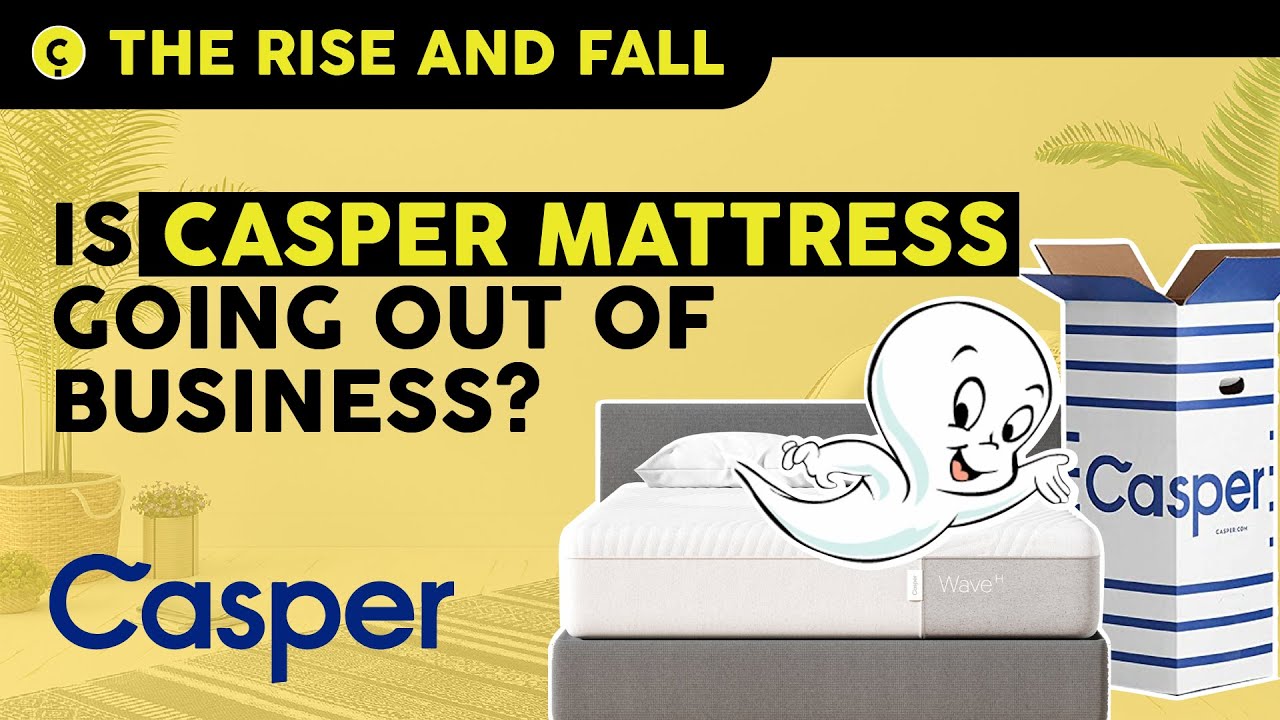Rise and Fall of Casper Mattress (What happened to Casper in 2023) | Should I buy a Casper Mattress?

# The Rise and Fall of Casper Mattresses
## Classic Start-up Beginnings
Imagine the television show FRIENDS meets start-up ambitions. That’s what the beginnings of Casper sound like, according to the founders themselves. Except for designer Jeff Chapin, who had worked for design consultancy, IDEO, and Philip Krim, who already had experience in the mattress start-up space, the other three founders are graduates of the Ivy League Brown University. Most notably, one of the founders, Luke Sherwin, had already started Brown University’s largest campus business while a student – a sort of universitywide Ebay. One of his very good friends, Neil Parikh’s father, was a sleep doctor. All five co-founders had a shared interest in making it big and disrupting an industry and actually brainstormed, met, and connected while at a coworking space. Ultimately, as a result of Krim’s expertise in the mattress business and Parikh’s connection to it as well, mattresses were chosen as low-hanging fruit.
Casper actually made its debut in 2014. The founders did not name the company after America’s favorite friendly ghost. Instead, they named it after one of the co-founders former roommates, who was both on the sleepy and laidback side. The mattress business at the time was an approximately $14 billion industry. To make a name for themselves in an already crowded industry, Casper offered customers a unique value proposition: buy our one-size-fits-all mattress that has been created for optimum sleep quality and comfort, have it delivered for free to your home in a stylish looking box, and if you don’t end up liking it, you can return it within 100 days. That, combined with an abundance of advertising dollars invested in getting the word out, led to Casper having $1 million of sales in its first month. Such success led to a desire to truly scale the company, which then led to the infusion of about $70 million in venture capital money.
## Solving a Problem & Marketing the Problem
Casper succeeded as a result of having a functionally and stylishly good product and marketing what they perceived as a problem – poor sleep quality – as much as marketing the product itself. Parikh himself admitted that the team realized they wanted to, invent an industry around sleep. In the same way that hard seltzers have been remarketed as cool to millennials because of savvy marketing and hipster pastel packaging, Casper spent about eight months testing different mattresses to get one ideal mattress and then brainstormed how to deliver it, just as deeply. The founders realized that their target audience of millennials might just live in set-ups similar to Sherwin’s, a walk-up. Assuming there was no elevator, what could they do to make the packaging standout amidst the many brown boxes that are delivered to homes daily? Based on those specifications, plus the fact that it would be cheaper to ship through UPS, they decided on finding a way to compress the mattress into the size of a mini refrigerator. The visual aspect of having a full-size mattress spring out of a relatively small box made it perfect for the social media channels so many of us are addicted to, as either viewers or content creators. YouTube and Instagram helped to show the novelty of the mattress and lured the very millennials that the company had hoped to attract.
## Success & Challenges of Scaling
By 2017, Casper had courted much press and sales. In 2016, the company had $200 million in sales, and that’s just two years into their business. They were valued at around $550 million at the time. Its high-profile and slick marketing attracted the interest of Target, who offered $1 billion to buyout the company. While that was 2x their valuation, apparently both sides couldn’t come to an agreement. They did, however, come to a sort of compromise. While Casper’s team was not willing to get acquired for that amount, they did accept Target as their lead investor in their new round of funding. Casper ended up receiving $75 million in Series C funding, having received a total of $170 million during that round. Additional investment came from NBA players such as Kyrie Irving and Carmelo Anthony, as well as celebrities including 50 Cent and Ashton Kutcher. In the end, Casper also sold a lounger chair that it sold exclusively at Target.
With fresh cash, Casper expanded into brick-and-mortar stores, as well as interesting partnerships. In 2017, Casper’s brand name recognition landed it a partnership with American Airlines. The company thus expanded its offerings with duvets, pillows, day blankets, lumbar pillows, slippers and pajamas. In 2018, the company also opened an office and manufacturing facility in Canada, joining its production houses, scattered across Taiwan and China overseas and North Carolina, Georgia, and Southern California domestically. Casper also bet big on selling its mattresses through brick-and-mortar stores after a positive reception to their pop-up locations in Los Angeles circa 2015. By 2018, Casper had grown to 20 retail stores in North America and just a year later, the company had 60 retail stores and 18 partnerships with prominent retailers such as Costco, Target, and West Elm.
## Casper IPO
By 2019, whispers of a Casper IPO made the rounds on the Internet. It became less of a question of, will it happen, rather than when will it happen. As with many other companies who finally decided to go public, Casper did so primarily because they needed a cash infusion. In 2019, it had $55 million in cash, but only $6 million of working capital and that year, had gone through in…
source
